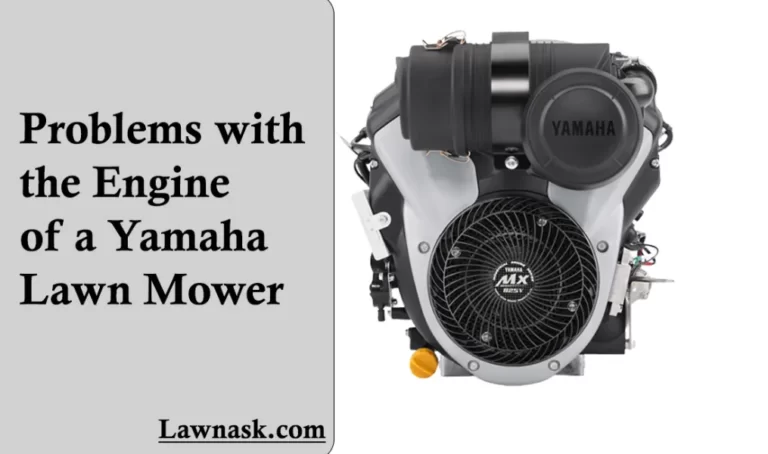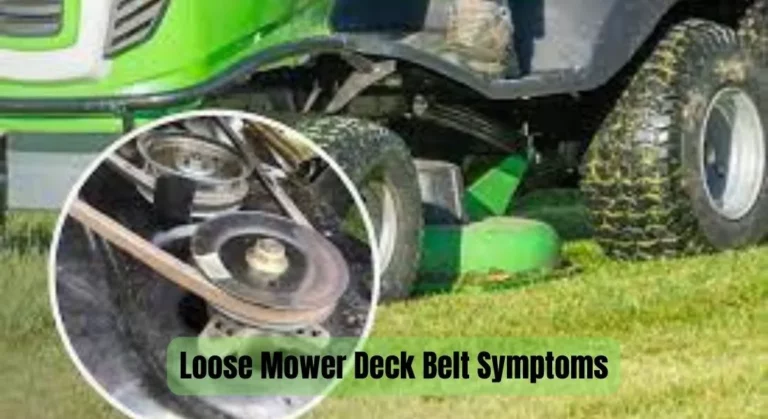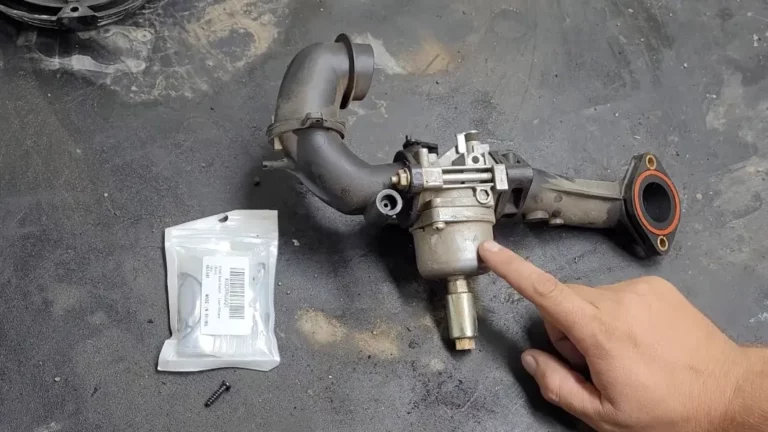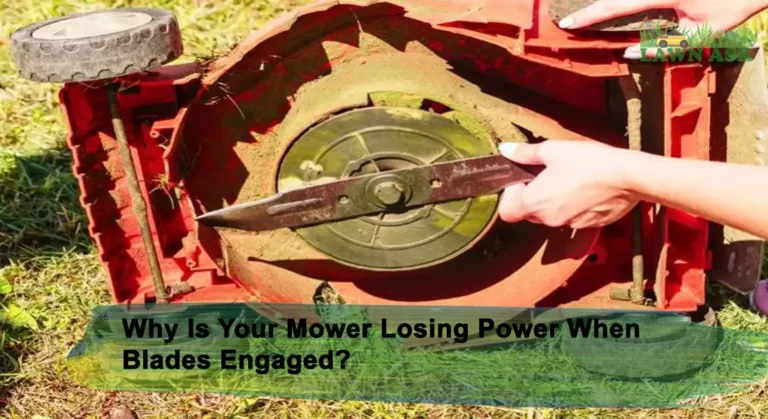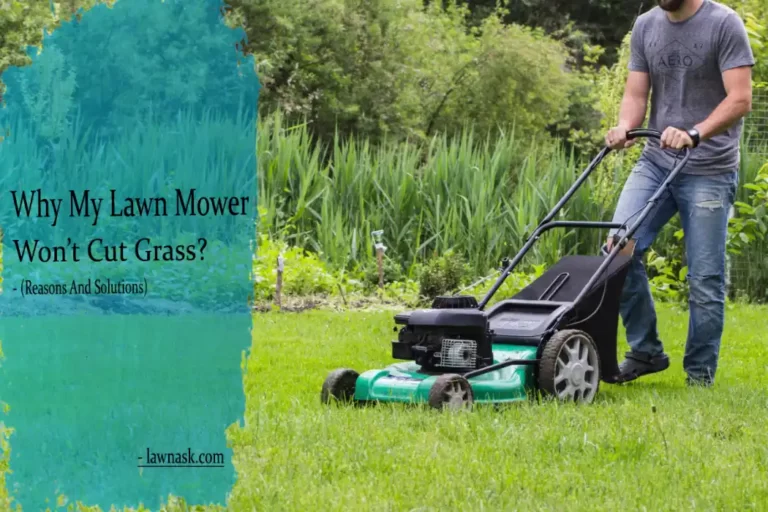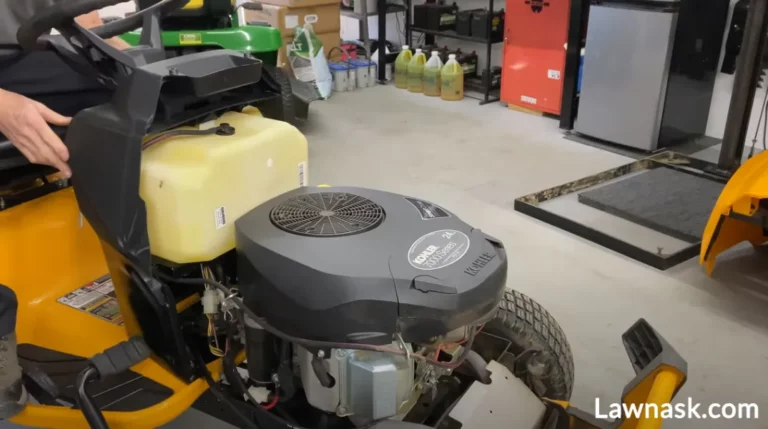Lawn Mower Leaking Oil from Bottom! (Why+How to Fix)
When a lawn mower leaks oil from the bottom, you must act fast because it could indicate a serious engine problem. But what causes a lawn mower to leak oil from the bottom?
The degree of an oil leak can range from mild to severe, ranging from clogged oil filters or faulty spark plugs to worn-out seals, gaskets, lower bearings, or oil pans.
However, a proper diagnosis is required to determine the source of an oil leak on a lawnmower.
The following article will explain the potential causes of lawn mower leaking oil from bottom, the signs to look for, and how to diagnose or fix the problem.
So, continue reading.

7 Reasons Why Your Lawn Mower Leaking Oil From Bottom?
Here are the seven causes that can lead your mower to encounter leaking from the bottom problem:
1. Damaged or Worn Oil Seals & Gaskets:
Oil seals are also known as lower-bearing ring seals. This seal aids in the tightening of the crankshaft and the spinning of the lawn mower blade.
However, if the oil seal breaks, the oil may leak into the engine. Over time, the oil seals can become worn out, leading to oil leaks.
Gaskets can wear out due to exposure to oil and fuel. Even they can fail sooner if the engine is overheated or used beyond its capacity. Also, one should never reuse the gaskets instead of changing them.
2. Loose or Dirty Oil filter:
The oil filter cleans the engine oil of contaminants. But a filthy or clogged air filter can cause the mower engine to overheat, resulting in oil leaks.
If the oil filter becomes loose, the oil may spill from the mower’s bottom. This can occur if the filter is not correctly tightened after an oil change.
3. Damaged or Cracked Oil Pan:
The oil pan is a critical component of the mower engine’s lubrication system located at the bottom of the engine and holds the oil.
But if the pan is loose, broken, or cracked, it will cause a loss of oil pressure. This can lead to engine overheating and significant damage.
4. Clogged Drain Hole:
During an oil change, the drain hole is utilized to remove old oil from the lawn mower engine.
If the drain hole becomes clogged, oil might build up and spill out of the mower’s bottom. If dirt or debris gets into the drain hole, this can happen.
5. Damaged Dipstick:
A defective dipstick is unlikely to cause an oil leak from the bottom of the mower. But oil may flow from the engine if the dipstick tube is damaged or loose.
6. Worn-out Piston Rings:
Piston rings seal the combustion chamber to prevent oil leakage. Over time, piston rings can wear out, allowing oil to leak into the combustion chamber and cause blue smoke.
However, if the rings are significantly worn or torn, the oil may leak past them and into the crankcase, causing oil to leak out of the mower’s bottom.
7. Overfilled Oil Level or Using the Wrong Type of Oil:
If the oil level is too high, it can put excess pressure on the seals and cause the oil to leak out of the mower.
Using the wrong type of oil can also cause leaks, as some oils are not compatible with certain engines.
Related Post: Lawn Mower Leaking Oil From Air Filter: Here’s How to Fix It!
How to Fix a Lawn Mower Leaking Oil From Bottom? (Step-By-Step Method)
Fixing a lawn mower that leaks oil from the bottom can be a simple task if you follow the right steps.
Tools you’ll need:
| A drywall screw |
| Drill |
| Screwdriver |
| Two-jaw puller |
| Bolt |
| Wire brush |
| Vehicle cleaner spray |
| Wrench |
Here’s a step-by-step guide:
Step-1:
Drain the oil from the mower after establishing that the leak was caused by a faulty lower bearing or oil seal during diagnostics. Place a container beneath the oil drain lid and remove it. Tilt your mower on its side and place a piece of cardboard under the mower’s underside.
Step-2:
Start by using the drill to remove the blade, and if the crankshaft adapter does not come off easily, use a two-jaw puller and a bolt to remove the adapter.
Now you can see and access the old seal over there, but before removing the seal, clean all the built-up dirt on the shaft with a wire brush and car cleaner spray.
Step-3:
Make a small hole in the seal but avoid making a scratch on the shaft or the outer part and use a drywall screw to pull up the seal.
Then take off the old spring too and insert the new seal accordingly.
Step-4:
Noticing a buildup of oil around the outside of the valve chamber where the cover means the valve gasket might be worn out or damaged.
So, access the valve gasket by removing the cover and removing the old gasket. Bring the right gasket OEM replacement part and install it properly before securely reinserting the valve cover.
If the valve cover looks bad in shape, replace it too.
Step-5:
Locate the oil filter on your mower and check if tightening it will fix the leaking problem or if it needs to be replaced.
Locate the oil drain plug or hose on the side of the mower, and if the drain plug is cracked, either repair or replace it.
If you see a cracked or damaged drain pan and if it is made of aluminum steel, you can repair it with QuickSteel epoxy or make a DIY drain pan as a replacement.
Step-6:
Remove the old filter with your wrench and replace it, tightening it with the filter wrench. Fill a funnel with new oil and insert it into the oil fill port.
Step-7:
If you accurately diagnosed and performed the preceding steps, the problem should have been resolved by now. But, just in case, check the dipstick on your mower. Replace the dipstick tube seal if they appear to be worn.
FAQs
When should I change the oil in my lawn mower?
You should change the oil filter every 50 hours of operation or at the start of a season, whichever comes first.
Why is there oil spilling from the bottom of my oil pan?
Oil spilling from the bottom of an oil pan can be caused by a damaged or corroded pan, a faulty gasket, or an overfilled oil level.
Can I use the mower while it is leaking oil from the bottom?
No, you should not. It can cause further serious damage to your mower engine.
What happens if there is too much oil in the lawnmower?
It can negatively affect your mower engine’s overall performance and might prevent the mower start comfortably.
Related Posts:

